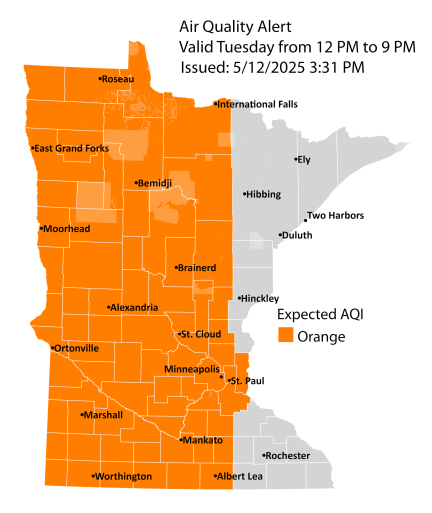
Air quality is expected to reach the orange AQI category for much of Minnesota, which is unhealthy for sensitive groups
The Minnesota Pollution Control Agency (MPCA) has issued an air quality alert for west central, east central, central, south central, southwest, north central, and northwest Minnesota. The alert takes effect at noon on Tuesday, May 13, and runs until 9 p.m. The affected area includes the Twin Cities metro area, Brainerd, Alexandria, Albert Lea, Marshall, Worthington, St. Cloud, Ortonville, Mankato, Bemidji, East Grand Forks, Moorhead, International Falls, Roseau, and the Tribal Nations of Upper Sioux, Mille Lacs, Prairie Island, Leech Lake, and Red Lake.
Ground-level ozone is expected to be high once again Tuesday afternoon across roughly the western two-thirds of Minnesota, including the Twin Cities metro area. Mostly sunny skies, warm temperatures, and low humidity will provide a favorable environment for two types of pollutants (volatile organic compounds and nitrogen oxides) to react with sunlight in the air to produce ground-level ozone. Ozone will remain elevated on Wednesday as sunny skies, warm temperatures, and dry conditions persist.